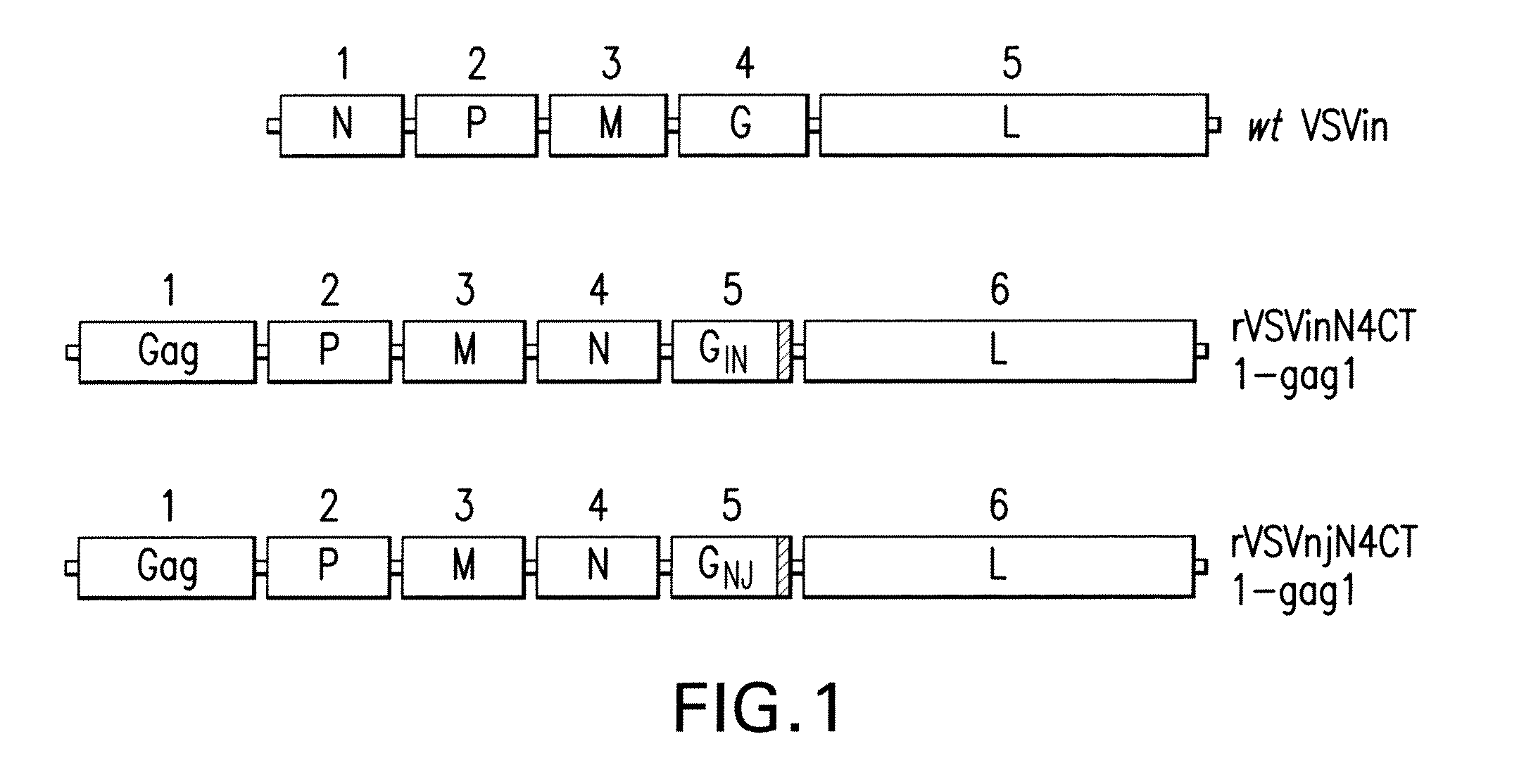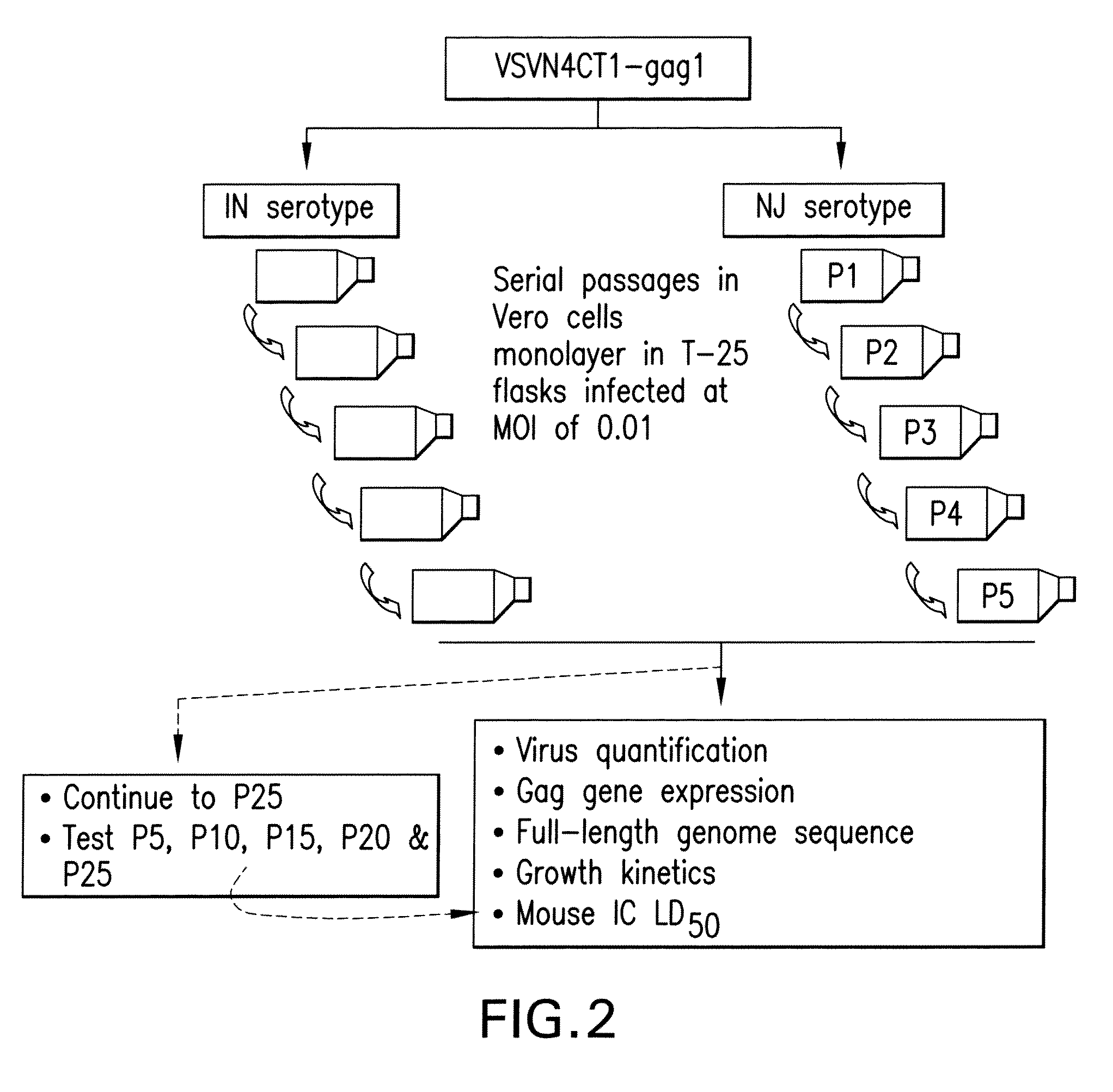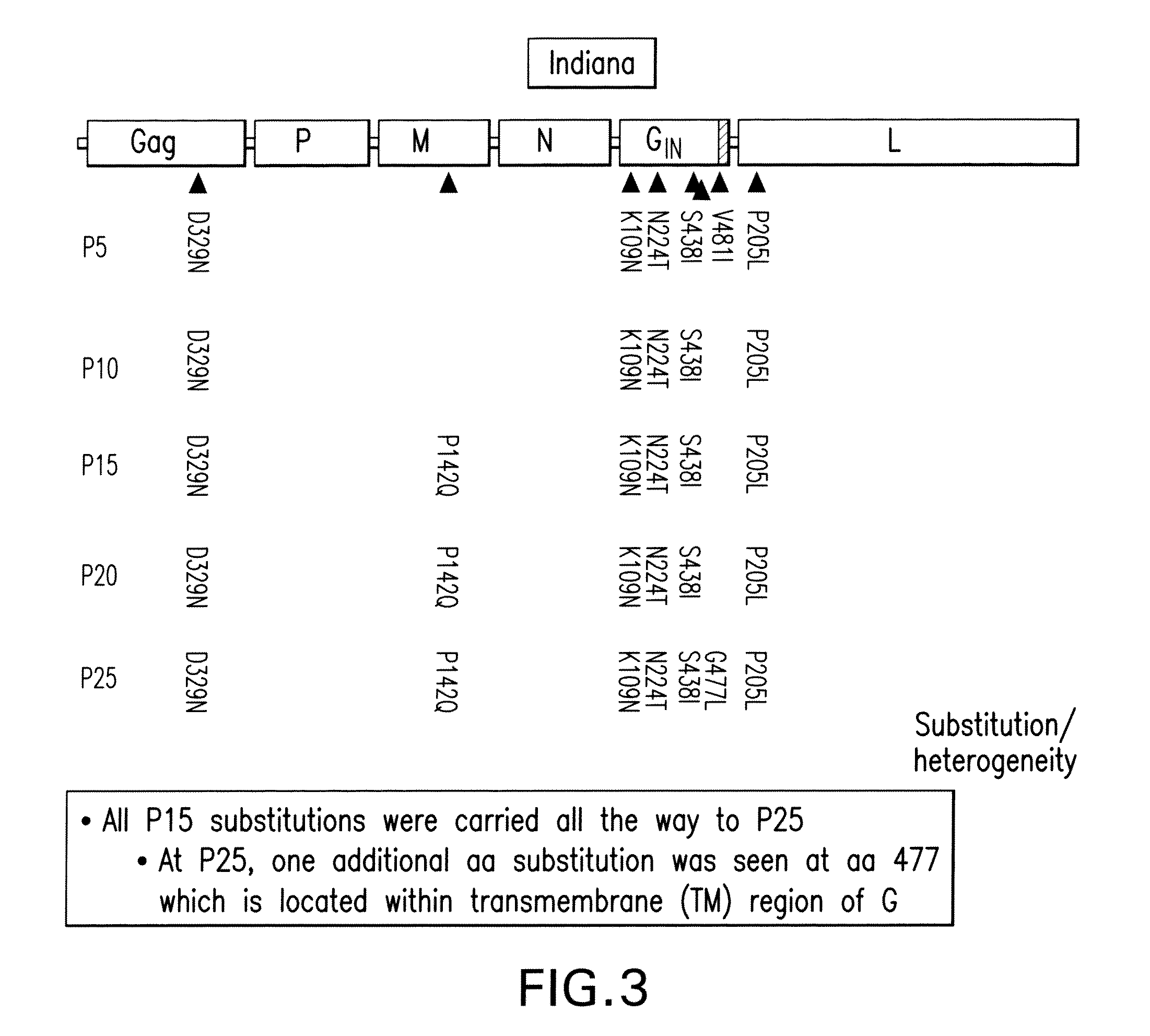Genetically Modified Attenuated Vesicular Stomatitis Virus, Compositions and Methods of use Thereof
a technology of attenuated vesicular stomatitis and genetically modified vesicular stomatitis, which is applied in the field of negative-strand rna viruses, can solve the problem that the prototype rvsv vector cannot be adequately attenuated for human use, and achieve the effects of improving virus yield, enhancing virus yield, and improving manufacturing yield
- Summary
- Abstract
- Description
- Claims
- Application Information
AI Technical Summary
Benefits of technology
Problems solved by technology
Method used
Image
Examples
example 1
Virus Passage Study with the VSV Indiana (IN) and VSV New Jersey (NJ) Serotype
[0228]FIG. 1 illustrates the genomic organization of wt VSV and attn VSVN4CT1-gag1. FIG. 2 is an outline of the experimental protocol used to serially passage virus in Vero cells. The viruses at every fifth passage were analyzed by indicated assays. FIG. 8A-8L shows the comparison of the nucleotide (NT) and amino acid (AA) sequences of original (passage 0 or P0) viruses and passage 25 of VSV Indiana serotype. The NT and AA substitutions in the passaged virus are shown in bold. FIG. 9A through 9M shows the comparison of the nucleotide (NT) and amino acid (AA) sequences of original (passage 0 or P0) viruses and passage 25 of VSV New Jersey serotype. The NT and AA substitutions in the passaged virus are shown in bold. These sequences are summarized in Table 5 and in the sequence listing.
[0229]The attenuated rVSVINN4CT1Gag1 was used as the starting material for passaging in Vero stationary culture. Vero cells ...
example 2
Production of Recombinant VSVN4CT1GAG1
[0232]The tissue culture-adapted San Juan strain of the VSV Indian serotype (VSVin) and its corresponding genomic cDNA were provided by Dr. John K. Rose of Yale University, New Haven, Conn. and were used in the derivation of the rVSVN4CT1gag1 recombinants.
[0233]A detailed procedure for preparation of rVSVinN4CT1gag1 plasmid DNA has been described earlier (Clarke et al., J Virology, 81, 2056-64, 2007 and Cooper et al., J Virology, 82:207-29, 2008). The analogous NJ serotype glycoprotein vector, rVSVnjN4CT1gag1 was generated by replacing the Gin gene with truncated form of the Gnj gene and has been described in Cooper et al, 2008. FIG. 1 depicts schematically the order of viral genes within viral genomes for the attenuated VSV recombinants derived from wt VSV.
[0234]Infectious virus was recovered from genomic cDNA following transfection of Vero cells with the viral genome plasmid containing full-length genome and the five expression plasmids indivi...
example 3
Experimental Protocol for Serial Passaging
[0237]Low passage VSV recombinants (P0) for each serotype were passaged 25 successive times on Vero cell monolayer in T-25 flasks as shown in FIG. 2. The Vero cells grown in serum-free medium were infected with virus at multiple of infection (MOI) of ˜0.01 and incubated in 32° C. / 5% CO2 incubator until extensive CPE is visible, usually in 48 to 72 hours post-infection. After each amplification, the virus culture was clarified by centrifugation at low speed and stabilized with 1×SP Sucrose phosphate buffer. The 10×SP contains per liter of potassium phosphate, dibasic, 12.2 gm; potassium phosphate, monobasic, 5.17 gm; sucrose, 746.2 gm). Virus cultures from passages 1 to 25 were titered by plaque assay as described earlier (Clarke et al., J. Virol., 81: 2056-64, 2007. Nucleotide sequencing was performed for every fifth passage.
PUM
| Property | Measurement | Unit |
|---|---|---|
| Immunogenicity | aaaaa | aaaaa |
| Stability | aaaaa | aaaaa |
| Strain point | aaaaa | aaaaa |
Abstract
Description
Claims
Application Information
 Login to View More
Login to View More - R&D
- Intellectual Property
- Life Sciences
- Materials
- Tech Scout
- Unparalleled Data Quality
- Higher Quality Content
- 60% Fewer Hallucinations
Browse by: Latest US Patents, China's latest patents, Technical Efficacy Thesaurus, Application Domain, Technology Topic, Popular Technical Reports.
© 2025 PatSnap. All rights reserved.Legal|Privacy policy|Modern Slavery Act Transparency Statement|Sitemap|About US| Contact US: help@patsnap.com



